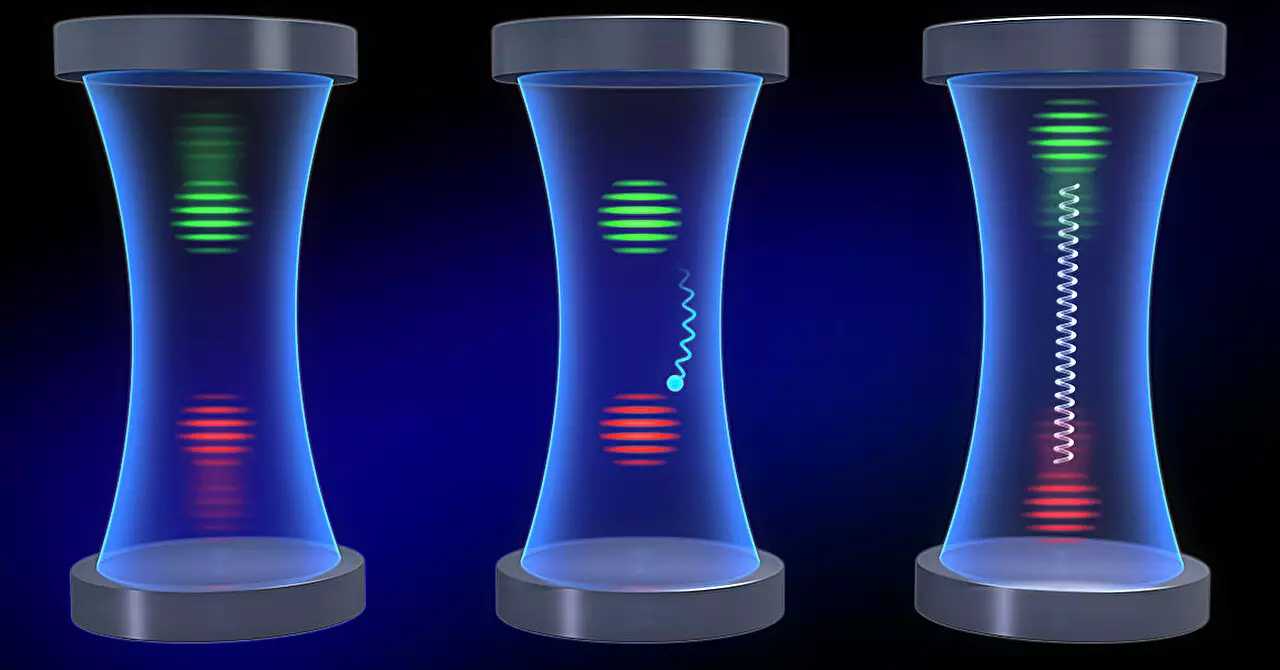The precise measurement of energy states at the atomic level has long been a challenge for physicists due to the phenomenon of atomic recoil. This recoil, caused by atoms interacting with photons, makes it difficult to accurately determine the position and momentum of individual atoms. However, recent research published in Science by JILA and NIST Fellows Ana Maria Rey and James Thompson, along with JILA Fellow Murray Holland, offers a groundbreaking solution to this problem through the concept of momentum-exchange interaction.
The researchers proposed a new type of atomic interaction that involves atoms exchanging momenta by exchanging corresponding photons. By utilizing a cavity composed of mirrors, they were able to observe a dampening of atomic recoil as atoms exchanged energy within the enclosed space. This collective absorption of energy dispersed the recoil across the entire population of particles, providing a promising solution for quantum sensing applications.
The findings of this study open up new possibilities for designing cavities that can mitigate recoil and other external influences in a wide range of experiments. This advancement has the potential to enhance our understanding of complex systems and uncover new facets of quantum physics. By refining cavity designs, researchers may also facilitate more precise simulations of phenomena like the Bose-Einstein-Condensate-Bardeen-Cooper-Schrift (BEC-BCS) crossover and high-energy physical systems.
For the first time, the researchers observed that the momentum-exchange interaction induced one-axis twisting (OAT) dynamics, a form of quantum entanglement between atomic momentum states. This quantum braid-like process entangles different molecules by twisting and connecting quantum states. OAT was previously only observed in atomic internal states, but this new discovery suggests that OAT induced by momentum exchange could help reduce quantum noise and improve physical measurements by quantum sensors, such as those used for detecting gravitational waves.
By forcing atoms to exchange photons and associated energies, the researchers were able to gain better control over atomic recoil. This exchange of energies resulted in the formation of a momentum graph known as a density grating within the atoms, signifying coherence between two momentum states. By exploring the interplay between the density grating and the optical cavity, momentum exchange was induced, dispersing any recoil among the atoms as a collective effect rather than individual occurrences.
The researchers also found that their new method could help mitigate the issue of the Doppler shift, a phenomenon that affects precise measurements by causing energy changes in particles due to relative motion. Through simulations, they demonstrated how the recoil-dampening system could overcome measurement inaccuracies caused by the Doppler shift, further highlighting the potential of momentum exchange in improving experimental outcomes.
As the researchers delve deeper into this new form of quantum entanglement induced by momentum exchange, they aim to explore its implications for enhancing various types of quantum devices. By understanding the interconnected behavior of atoms through momentum exchange, they hope to unlock new possibilities for advancing quantum mechanics and facilitating innovative technologies in the field.


Leave a Reply